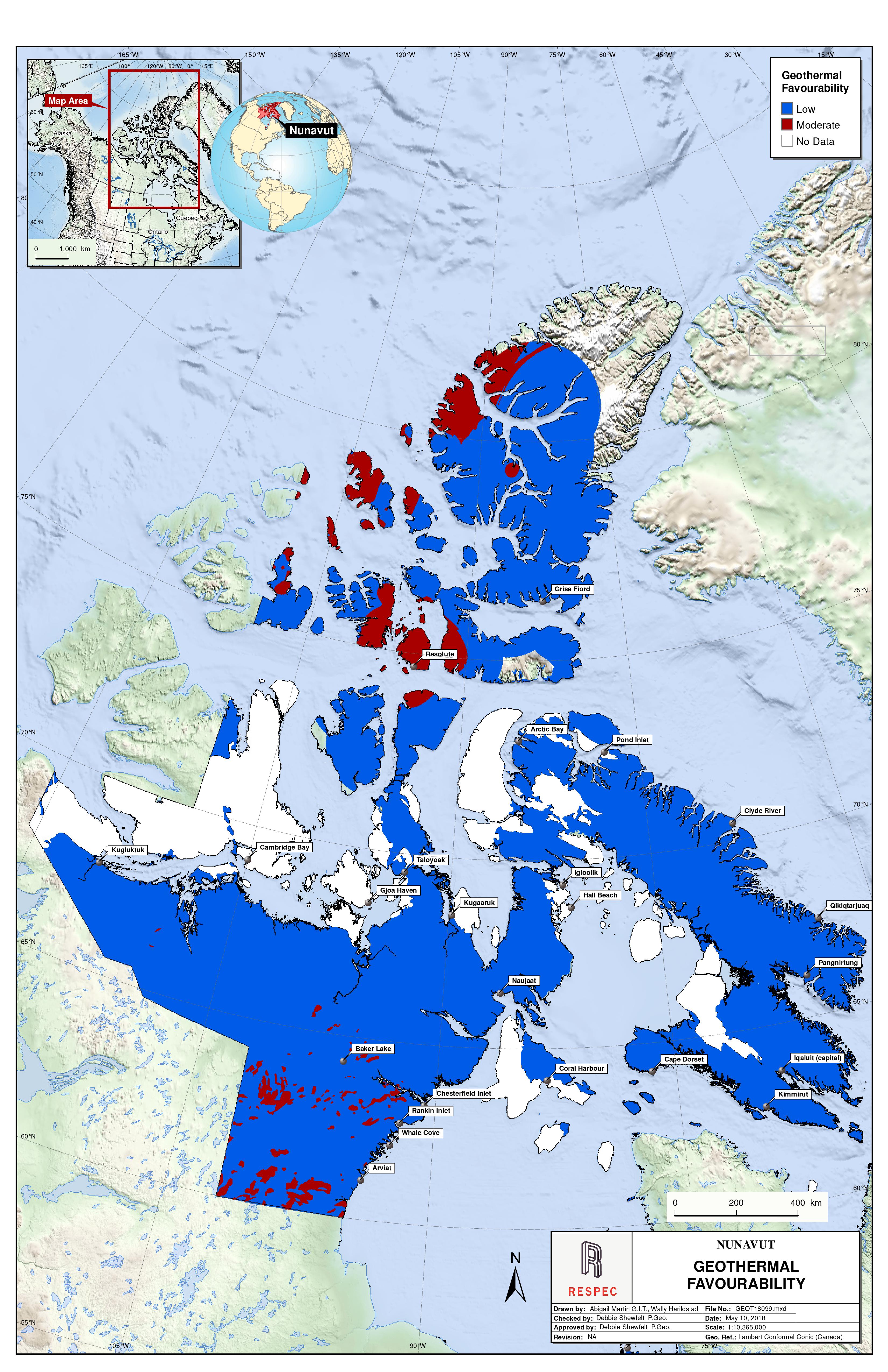Is Geothermal Technology Possible in Nunavut?
What is Geothermal Energy as a Renewable Energy Source?
Geothermal Energy is a renewable form of resource that is gained from the heat generated underground. As its name suggests, geothermal technology makes use of Earth’s inner surface as reservoirs are built underground through digging wells. These reservoirs are then set up accordingly and consist of a type of pump that directs the heat into powering up the plant. Unarguably, the biggest benefit of this type of system is that it does not depend upon the external weather conditions. Regardless of the climate above the surface, the Earth’s underground temperature tends to remain relatively the same all around the globe.
The heat formed under the surface essentially generates from the Earth’s central core. Thus, it is spread evenly across the planet’s circumference, making it an invaluable source of renewable energy even in the extreme circumpolar Northern areas.
Geothermal Options for Nunavut
Quite similarly, steps are also being taken in Canada to shift towards geothermal power generation. In Nunavut, Qulliq Energy Corporation (QEC) has worked its way through a Phase I study of geothermal as an exploratory study of this technology as a more sustainable means for communities than diesel distribution. QEC, through financial project support from the Federal government, is reviewing options to generate, transmit, distribute, deliver, sell, and supply renewable energy options to the local industries and businesses.
Any geothermal development would need to occur at or near the isolated communities as there is no infrastructure to support energy transfer and resource temperatures will not support large scale power production. The territory is divided into two major geological regions and the geothermal resource is defined by those regions. The Arctic Basins region in the northwestern area of Nunavut is a sedimentary geothermal resource and has been preliminary characterized by oil and gas exploration. The Canadian Shield region will require an Enhanced Geothermal System (EGS) at depths of 5-7km to reach temperatures suitable for binary power generation and direct use heating.
The general Global Protocol methodology that was used by QEC for an exploratory Phase I Nunavut Geothermal Study conducted in 2017, had some modifications due to the absence of data. Theoretical and technical potential was calculated across the entire Territory of Nunavut regardless of data availability. Due to lack of data, values were estimated based on rock type, which included the entirety of the Canadian Shield region. Unfortunately for Nunavut, under the Canadian Code for Public Reporting, the generated resource maps for our territory are considered to have low confidence for geothermal activity. No areas in Nunavut were considered to meet the minimum resource category of an inferred resource: a direct geothermal source point.
The following image from the study shows low to moderate locations and communities across the three Regions.

Additional data collection is a key next step needed to properly define geothermal resource potential in Nunavut. The study that next step work in Phase II would prioritize the drilling of small diameter geothermal gradient wells in target communities to depths below the permafrost to measure subsurface thermal properties.
Other Options
Potential application of hybrid solar thermal – binary geothermal power production may be cost effective and increase overall power production. A thick permafrost, >500 meters, is a challenging heat sink that can be overcome with unique well bore designs. Enhanced geothermal systems are being developed around the world, but economic and sustainability challenges remain.
Arctic and Global Leaders in Geothermal: Iceland
Amongst others, Iceland is one such country present in the circumpolar North which capitalizes on producing energy through geothermal technology. According to reports, the government of Iceland recently approved the construction of approximately 100 power projects, majority of which are based upon geothermal technology.
The geographical layout of Iceland strategically allows the manifestation of heat energy which is present in abundance underground. Iceland is also home to a large volcanic area which significantly helps in raising the underground temperature because of the flow of lava. Watch this video to learn more about Iceland's geothermal energy system that generates over 80% of their total energy for homes, businesses and community uses.
As at March 2020, QEC has not yet started the second phase of the study. However, Phase II includes comprehensive data collection and analysis for the communities of Resolute Bay, Cambridge Bay and Baker Lake. In addition, QEC will be looking to perform a temperature gradient well drilling in Baker Lake. Based on the outcome of the Nunavut Phase II Geothermal study, QEC will select one of the three communities for further exploration.
Overall, geothermal technology has serious potential to completely replace power generation methodologies that can harm the environment. Governments, around the world, have already exploited the possibility of shifting towards geothermal technology. The venture in Nunavut is simply one of many which possesses the potential to completely revolutionize the energy generation capabilities in that region, but our unique geography and the distance from geothermal hot spots from hamlets, may also be prohibitive as a viable solution for Nunavut.

Copyright © All Rights Reserved

